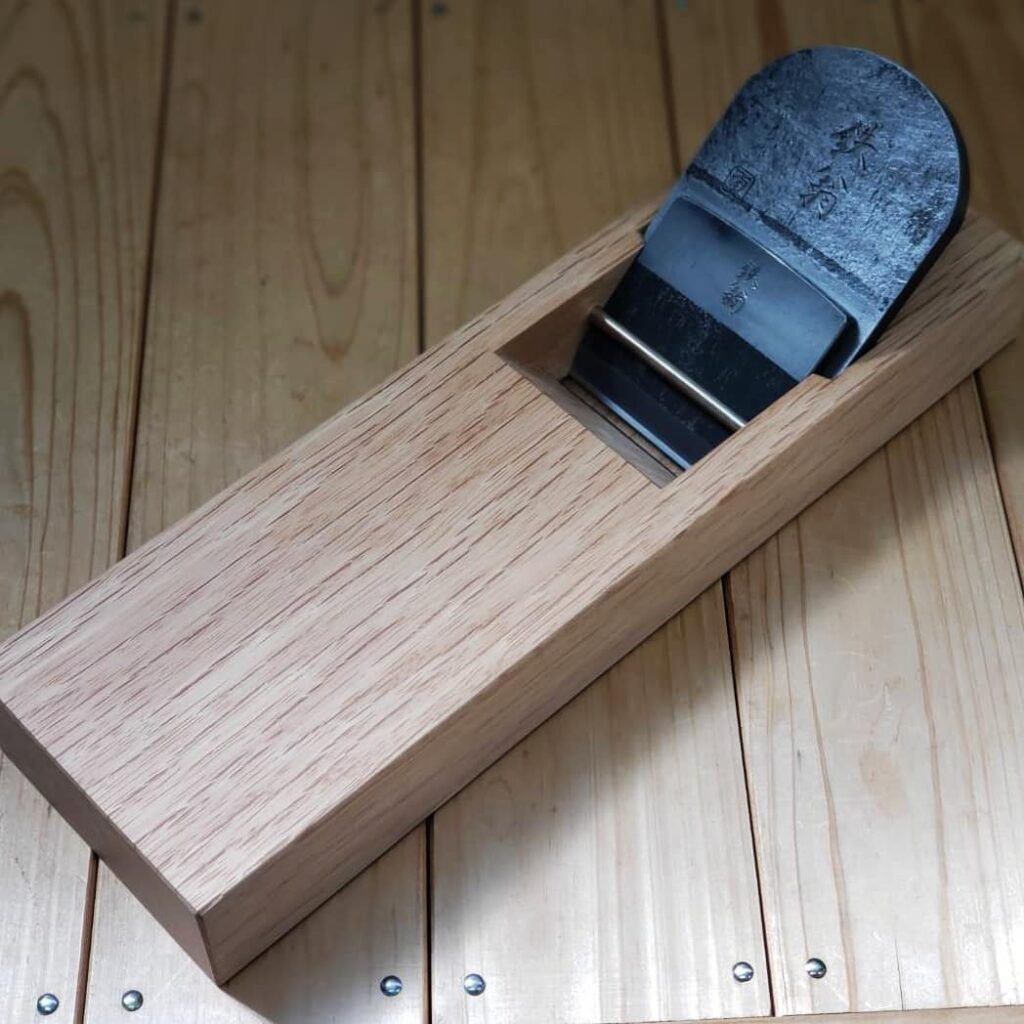1. What is Banshu Miki Uchihamono?

Banshu Miki Uchihamono is a metalwork product made around Miki City, Hyogo Prefecture.
Like Shinshu knives and Tosa knives, Banshu Miki knives are known as crafts made using a technique called “forging” that is made by putting them in a mold, and as a production center for large knives in Japan.
Features
It means that a wide variety of cutlery is still made by the old-fashioned manufacturing method.
From daily necessities such as knives, chisels and planes to tools used for construction, various things are carefully made by craftsmen one by one.
History
It was about 1500 years ago that blacksmithing, which is the source of Banshu Miki Uchihamono, was carried out.
It is said that the origin of blacksmithing is that Baekje’s Korean blacksmiths settled around Miki City at that time after interacting with Yamato Blacksmith in Japan.
However, it was a long time ago in the Edo period that it was established as a Banshu Miki knives from here.
In the Edo period, the foundation of blacksmithing was completed in this way, so Banshu Miki Uchihamono Crafts was born.
According to the existing books, it was in 1763 (Horeki 13th year) that the trunk was smithed and showed signs of development.
The great fire in Edo in 1760 (Horeki 10th year) required a large amount of timber, and construction was flourishing.
In 1792 (Kansei 4th year), the sales monopoly right in Osaka disappeared, and around 1885 (Meiji 18), the demand for Japanese blacksmithing decreased at a stretch due to the introduction of Western technology. Never done
Today, thanks to the efforts of the craftsmen at that time, the technique of Banshu Miki Uchihamono has been handed down.
2. Work process

①Tansetsu(鍛接:Forge welding)
This is the process of joining carbon steel to the ground iron heated at a high temperature of about 1,200 ℃.
Join using a bonding agent made of borax or the like.
In joining, it is said that it is not good if the temperature is too high, but it will not be joined well if the temperature is low.
Therefore, adjust the temperature visually.
②Tanzo(Houchi)(鍛造(穂打ち):Forging (earing))
Of the forging, the work called earing is the process of forging the part that corresponds to the tip of the ear.
At this time, it is necessary to forge so that the base iron and carbon steel are firmly combined.
Therefore, hit it firmly with a hammer so that the carbon steel wraps tightly.
The forged one is still large for a knife.
Therefore, when the earing is finished, cut it into one piece, that is, one piece.
③Tanzo(Jikuuchi)(鍛造(軸打ち):Forging (shafting))
Axle is to train the opposite part of the ear.
Be careful not to overcook the ears.
Then, when the shafting is finished, make a part called the middle stem to be put in the handle.
④Hidukuri(火造り:Fire making)
The forged one is put into the fire again to make it more solid.
When making fire, it is necessary to keep the temperature at 950 to 1,000 ℃.
Then, the fire-made ones are re-forged to adjust the thickness and width.
⑤Yakinamashi(焼き鈍し:Annealing)
Put it in straw ash and heat it at a low temperature of about 750 ℃.
Annealing is performed to change the carbon steel into fine crystals and change the upper body so that it can be processed with a file.
⑥Kenma(研磨:Polishing)
Once the carbon steel has been softened sufficiently with a file by annealing, it is further shaped by polishing.
First, rough cut so that the shaft is rounded.
Next is the roughening of the back side.
Apply an abrasive to a cloth cut out in a circle, and smooth the surface by buffing by rotating and polishing.
⑦Yakiire(焼き入れ:Quenching)
The polished steel is reheated.
This time, it is a short time of several minutes at a low temperature of 700 to 800 ℃.
And, when it is hardened, it is quickly put in water and cooled.
Also, when quenching, unlike the conventional baking process, it is characteristic to apply grindstone powder.
Applying the grindstone powder makes the strength more uniform and makes the skin beautiful after baking.
⑧Yakimodoshi(焼戻し:Tempering)
After removing the distortion created by quenching, tempering is performed.
The process is important in this tempering.
By following the steps firmly, the blade will be glossy.
The procedure is to temper with oil, rinse with water, soak in salt at about 150 ℃, and temper again.
⑨Shiagekenma(仕上げ研磨:Finish polishing)
Cutlery that has been struck by fire many times and forged is tempered and then polished again as a finish.
In this final process, the ears and tips are thoroughly polished to create a sharp knife.
3. Traditional craftsman

Naoki Morita (Sadahide Chiyotsuru III): Plane blacksmith
It started in 2004 and became a disciple of the second generation Chiyotsuru Sadahide.
He is certified as a traditional craftsman by the country in 2017.
The knife is a double-edged sword that has the convenience and danger of having a sword from 2 million years ago.
I think that tools are not only ordinary products but also works that incorporate playfulness, and if they are better, they will raise the feelings of the users and improve their work efficiency.
We want to provide tools that enrich the hearts of their owners and give them moisture and harmony in their lives.
With that in mind, we will continue to work hard every day to create better products from the land of Miki, which has lived with iron since 1300 years ago.
4. Initiatives

At the “Milan International Exposition” held in Milan, Italy, we exhibited at the local limited-time shop “Traditional Craft Milan Square” and gave a production demonstration for 4 days.
I was exhibiting tools for making musical instruments such as violins.
A total of about 20 items were exhibited, including a “bean plane” with a blade width of 6 to 24 mm and a “scraper” that finishes curved surfaces.
At the venue, we demonstrated the process of making a plane by hanging a file and the work of shaping a knife.
A video introducing the entire process of plane production was also screened.
As with events in Japan, we are also engaged in activities to actively inform the world.
5. Impressions

It is no wonder that what has been indispensable to humankind for two million years is still indispensable.
The appearance may not be able to improve any further, but the manufacturing technology and product types are improving day by day.
As with any industry, I believe that the inheritance of the original tradition is how to make progress while reflecting the technologies and traditions that have been passed down to the present day.
To that end, the cycle in which new craftsmen are born and new products are created based on the opinions of those craftsmen and customers is very important.
I think that the number of traditional crafts that will inherit the tradition will increase more and more in modern Japan, where the stereotypes that the tradition in Japan must be Japanese have been dispelled.
I would like to experience and convey various things while having fun so that I can contribute to the progress as much as possible.
Next time preview
Thank you for reading to the end!
I would also like to post some interesting things about Kansai.
Then, have a good trip from now on! !!
PS. We provide various information about Kansai in Japan, so please feel free to contact us if you would like to visit or experience it!



コメント